Postgres-BDR with OmniDB
1. Introduction
Postgres-BDR (or just BDR, for short) is an open source project from 2ndQuadrant that provides multi-master features for PostgreSQL.
Here we will show how to build a test environment to play with BDR and how to configure it using the OmniDB 2.1 web interface.
2. Building test environment
Let’s build a 2-node test environment to illustrate how to configure BDR within OmniDB.
2.1. Pull OmniDB repo
The first thing you need to do is to download OmniDB repo from GitHub and make sure you are in the development branch. Run the following:
git clone http://github.com/OmniDB/OmniDB cd OmniDB git checkout dev
2.2. Create 2 virtual machines with BDR
On your host machine, you need to have installed:
- VirtualBox
- Vagrant
- Vagrant plugin vbguest
Please refer to VirtualBox and Vagrant websites for more information.
For this test environment to work, you need to put both machines in the same internal network. If necessary, please edit the file Vagrantfile for both machines now, like this:
config.vm.network "private_network", ip: '192.168.56.103', :name => 'vboxnet0', :adapter => 2
On your terminal (assuming you are on the root directory of OmniDB repo), to create the first virtual machine with BDR, you need to do:
cd OmniDB/OmniDB_app/tests/vagrant/multinode/bdr_node1
vagrant up
While inside this directory, you can connect via SSH to the machine with vagrant ssh. User vagrant has root access with sudo su. Now let’s create the second virtual machine with BDR:
cd ../bdr_node2
vagrant up
You can connect to this machine via SSH the same way. Also, port 5432 of the fist machine is mapped to the port 5403 of the host machine, and port 5432 of the second machine is mapped to the port 5404 of the host machine. From the host machine, you can connect to both virtual machines through OmniDB, using the user omnidb.
3. Configuring BDR
3.1. Use OmniDB to connect to both machines
Assuming you have OmniDB (server or app) installed in your host machine, you can connect to both databases in order to test the connection. In OmniDB, create 2 connections like this:
Then click on the Test Connection action on each connection. You will have to type the password of the user omnidb, which is also omnidb.
3.2. Create required extensions
BDR requires 2 extensions to be installed on each database that should have multi-master capabilities: btree_gist and bdr. Inside OmniDB, you can create both extensions by right clicking on the Extensions node, and choosing the action Create Extension. OmniDB will open a SQL template tab with the CREATE EXTENSION command ready for you to make some adjustments and run:
You need to create both extensions btree_gist and bdr on both nodes.
3.3. Create the BDR group in the first node
With both extensions installed, you can refresh the root node of the OmniDB tree view. A new BDR node will appear just inside your database. You can expand this node to see some information about BDR:
As you can see, BDR is not active yet. In the first node, we need to create a BDR group. The other nodes will join this group later.
To create a BDR group, right click in the BDR node. In the SQL template, adjust the node name and the node external connection info (the way other nodes will use to connect to this node):
After you execute the above command, right click the BDR node and choose Refresh. You will see that now BDR is active in this node, now called node1. If you expand Nodes, you will see that this BDR group has only 1 node:
3.4. Join the BDR group in the second node
Let’s move to the other node. You can see that BDR is installed but not active yet. To link the two nodes, we will need to make this node join the BDR group that was previously created in the first node:
We can see that the second node has BDR active, his name in the BDR group is node2, and now the BDR group has 2 nodes:
4. Testing BDR
4.1. Creating a table in the first node
Let’s create a table in the first node. Expand the public schema, right click the Tables node and choose Create Table. Give the new table a name and add some columns. When done, click in the button Save Changes:
Confirm that the table has been created in the first node by right clicking the Tables node and choosing Refresh. Go to the second node, expand the schema public, then expand the Tables node. Note that the table has been replicated from node1 to node2. If the table was created in the second node, it would have been created in the first node as well, because in BDR all nodes are masters.
4.2. Adding some data in the second node
While you are at the second node, right click the table bdrtest, point to Data Actions and then click in Edit Data. Add some rows to this table. When finished, click in the Save Changes button.
Go to the first node, right click the table, point to Data Actions and then click in Query Data. See how the rows created in node2 were automatically replicated into node1.
4.3. Adding some data in the first node
Let’s repeat the same procedure above, but instead of inserting rows from the second node, let’s insert some rows while connected to the first node. Note how they replicate into the second node in the same way.



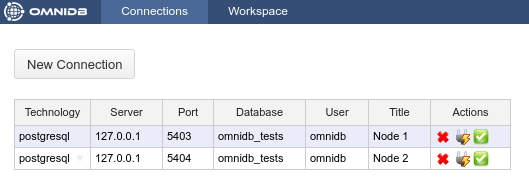
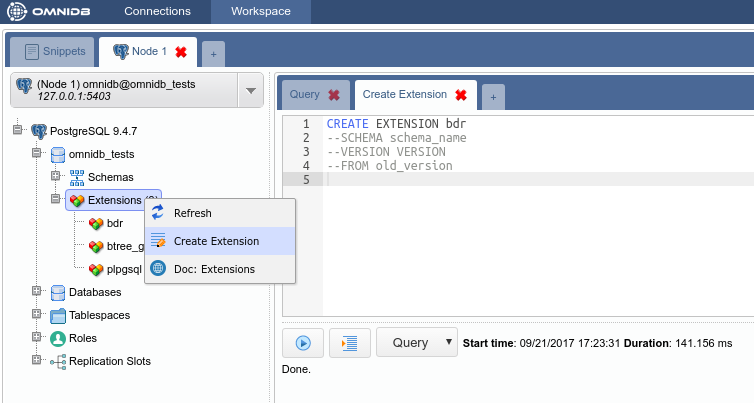
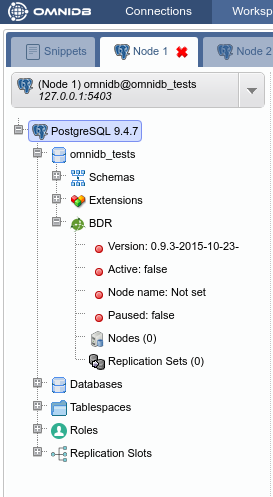
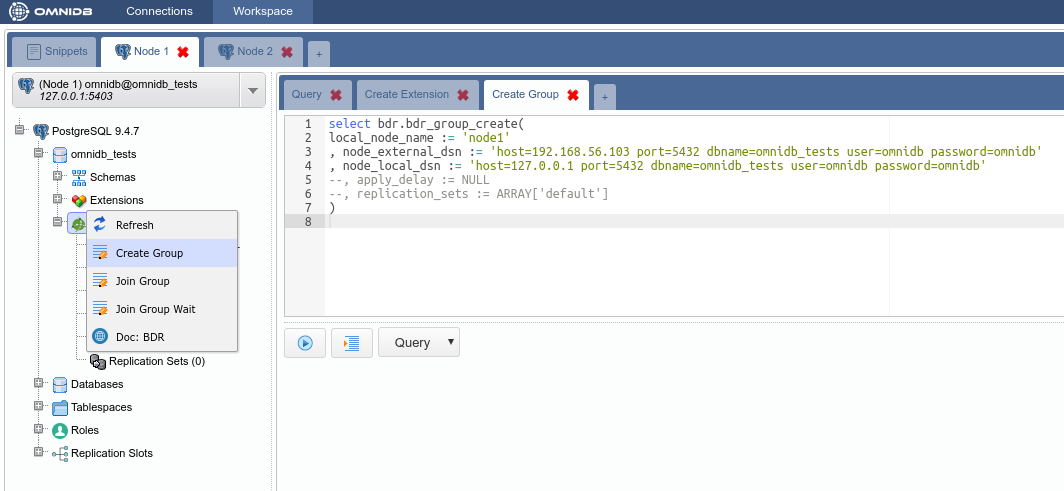
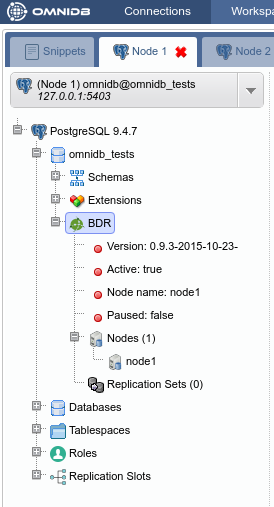
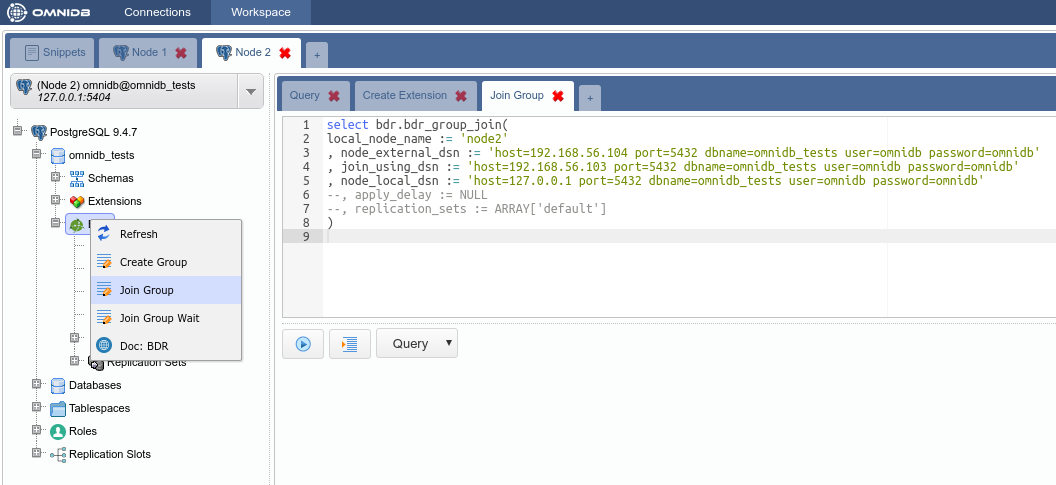
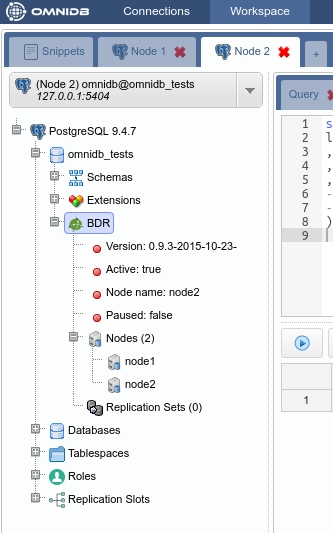
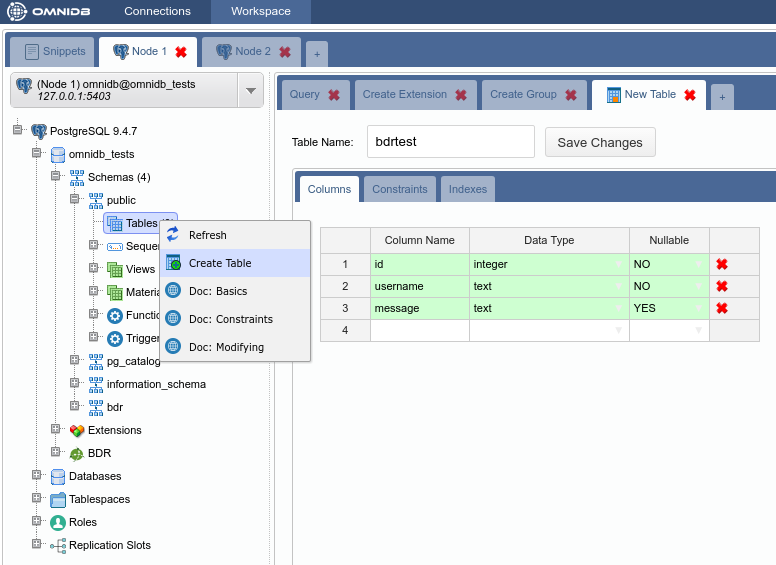
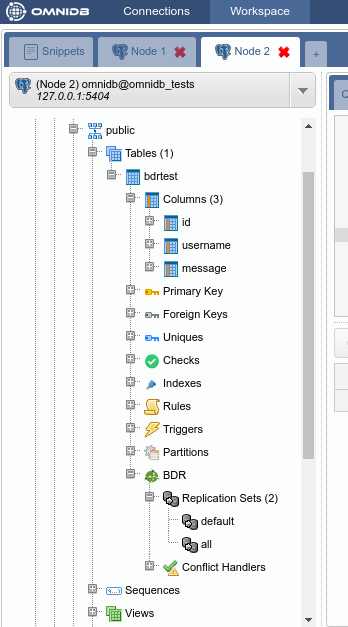


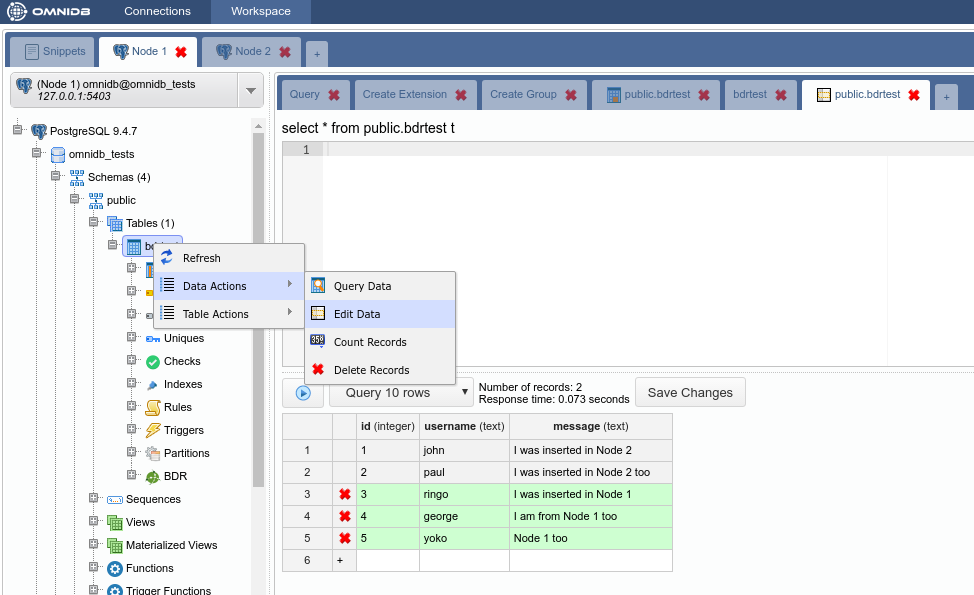
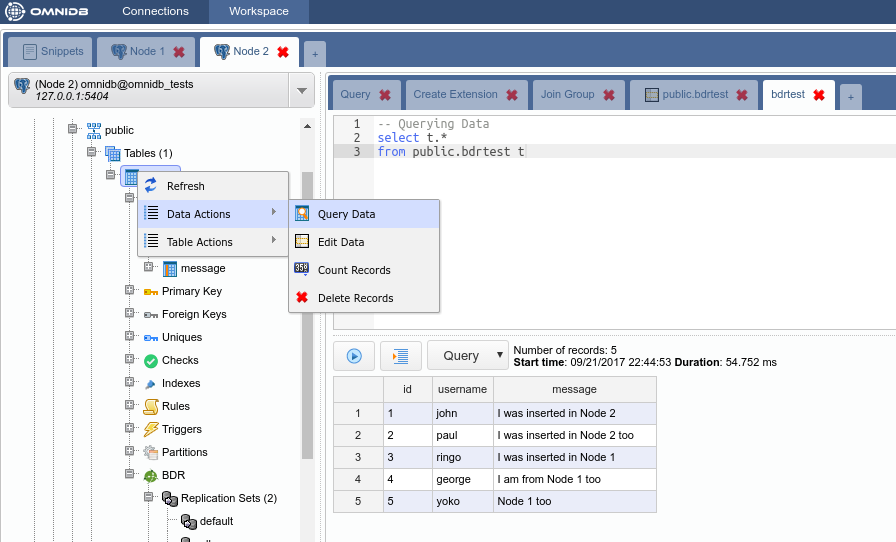

I started following this post. The git clone took over 3 hours (Partly because of my VERY SLOW ISP. It finally finished downloading and I was able to download & install VirtualBox & Vagrant. I then got to the part where it says “vagrant up” and it said it was going to take over 10 HOURS to vagrant up.
Wouldn’t it be MUCH FASTER and easier to use Docker instead of Vagrant???
BTW I am using Ubuntu 17.04.
Thanks.